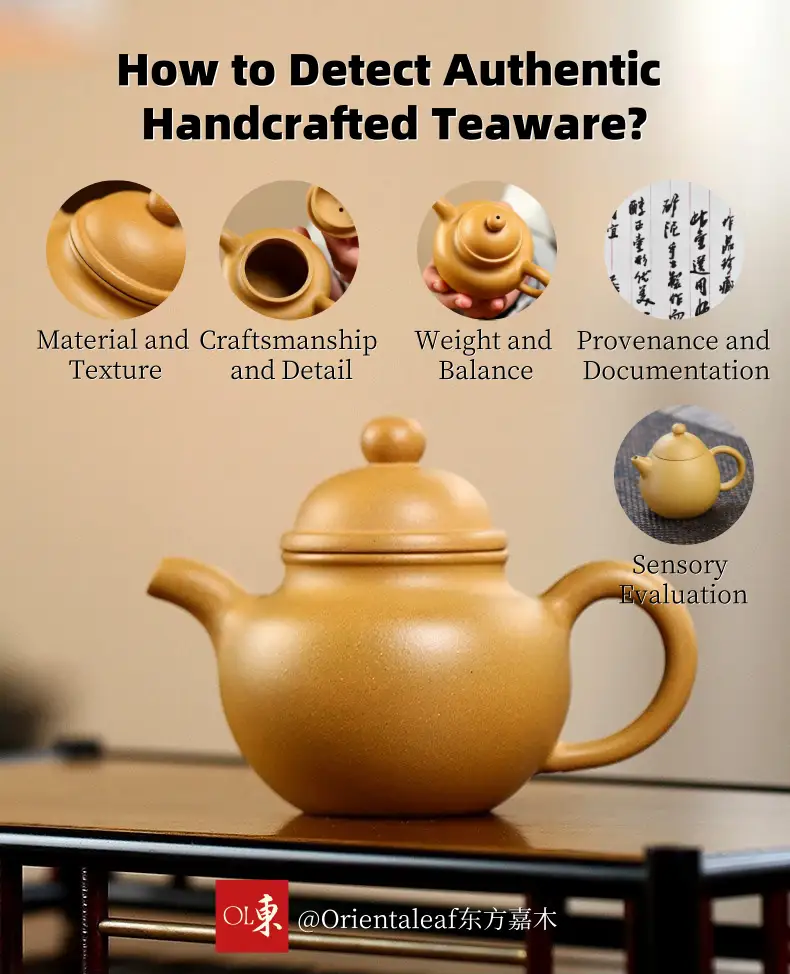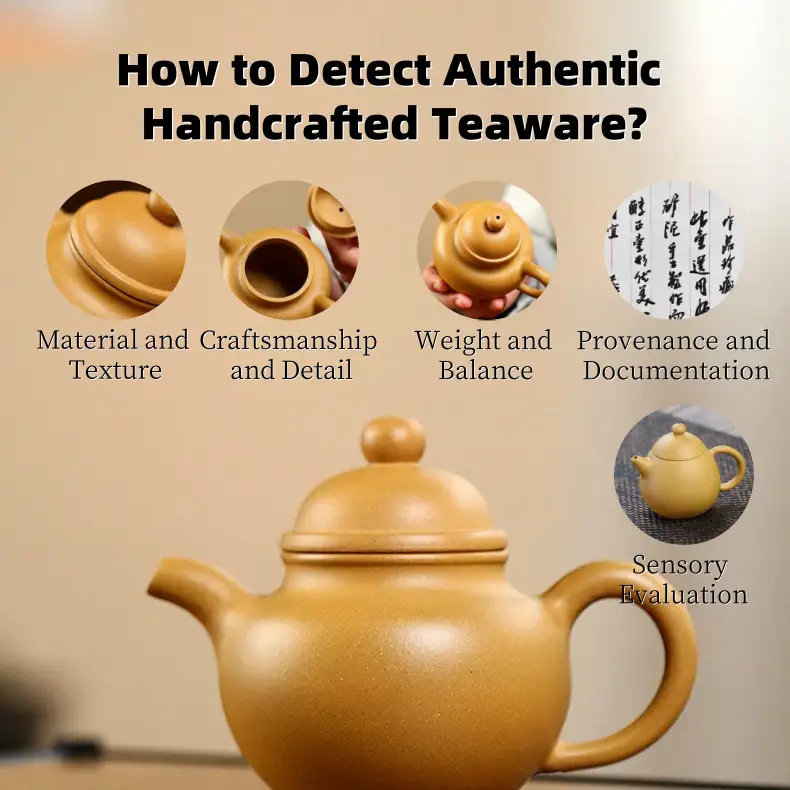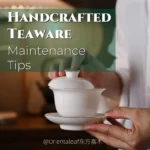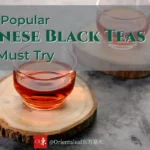For tea enthusiasts, the allure of authentic handcrafted teaware is undeniable. These exquisite pieces not only enhance the tea-drinking experience but also serve as works of art in their own right. However, with the proliferation of imitations and mass-produced alternatives, it can be challenging to distinguish genuine artisanal teaware from clever replicas. This comprehensive guide will delve into the world of authentic handcrafted teaware, exploring the issues surrounding counterfeits, providing tips for identifying genuine pieces, and discussing the investment value of these prized items.
The Issue of Knock off Yixing Handcrafted Teaware
Yixing teaware, renowned for its rich history and unparalleled craftsmanship, has become a prime target for counterfeiters. These knockoffs pose a significant challenge to both consumers and legitimate artisans. The problem is particularly acute in the realm of Yixing clay teapots, which are highly sought after for their unique properties and cultural significance.
Counterfeit Yixing teaware often mimics the appearance of authentic pieces, but lacks the quality and characteristics that make genuine Yixing clay so prized. These imitations may be made from inferior materials, such as common stoneware or even plastic, and lack the meticulous attention to detail that defines true handcrafted teaware.
The proliferation of knockoffs has several negative consequences:
- Dilution of the craft: Mass-produced imitations undermine the work of skilled artisans who dedicate years to honing their craft.
- Consumer deception: Unsuspecting buyers may overpay for inferior products, believing them to be authentic.
- Health concerns: Some counterfeit teaware may contain harmful substances that can leach into tea during brewing.
- Economic impact: The flood of cheap imitations can drive down prices, making it difficult for genuine artisans to sustain their livelihoods.
How to Detect Authentic Handcrafted Teaware?
Identifying genuine handcrafted teaware requires a combination of knowledge, careful observation, and sometimes, expert guidance. Here are some key factors to consider when evaluating the authenticity of artisanal teaware:
Material and Texture
Authentic handcrafted teaware, particularly Yixing clay pieces, has a distinctive texture and appearance:
- Genuine Yixing clay has a fine, slightly rough texture that’s pleasant to the touch.
- The surface should have a subtle luster, rather than a glossy finish.
- Look for slight imperfections or variations that indicate hand crafting, such as minor asymmetries or subtle tool marks.
Craftsmanship and Detail
True artisanal teaware exhibits exceptional craftsmanship and attention to detail:
- Examine the spout, lid fit, and overall proportions for harmony and precision.
- Check for clean, well-defined edges and crisp details in any decorative elements.
- The bottom of the teaware should be finished with care, often featuring the artist’s seal or signature.
Weight and Balance
Authentic handcrafted teaware often has a distinctive heft and balance:
- Genuine Yixing teapots tend to be heavier than their mass-produced counterparts due to the density of the clay.
- The weight should be evenly distributed, with the piece feeling balanced when held.

Provenance and Documentation
When investing in high-end handcrafted teaware, consider the following:
- Seek pieces from reputable sources or directly from recognized artisans.
- Look for authentication certificates or documentation that verifies the piece’s origin and maker.
- Research the artist’s style and compare the piece to other known works.
Sensory Evaluation
Engage your senses to assess the authenticity of handcrafted teaware:
- Smell: Genuine Yixing clay often has a subtle, earthy aroma.
- Sound: Tap the teaware gently; authentic pieces should produce a clear, resonant sound.
- Touch: Feel for the natural coolness of the clay and the subtle variations in texture.
Expert Consultation
When in doubt, seek the advice of experts:
- Consult with experienced tea masters or collectors who can share their knowledge.
- Attend tea fairs or workshops where you can handle and compare various pieces of authentic teaware.
- Consider having valuable pieces appraised by recognized experts in the field.
How Much Do Authentic Handcrafted Teaware Cost?
The price of authentic handcrafted teaware can vary widely, depending on factors such as the artist’s reputation, the complexity of the design, the quality of materials used, and the piece’s historical significance. Understanding the pricing landscape can help you make informed decisions when investing in artisanal teaware.
Entry-Level Pieces
For those new to collecting handcrafted teaware, there are options available at more accessible price points:
- Simple, functional Yixing clay teapots by lesser-known artisans may start around $50 to $200.
- Basic hand-thrown ceramic teacups or small tea bowls can range from $20 to $100 per piece.
- Handcrafted tea trays or serving boards might cost between $100 and $500, depending on the material and craftsmanship.
Mid-Range Collectibles
As you delve deeper into the world of authentic handcrafted teaware, prices can increase significantly:
- Yixing teapots by established artisans may range from $500 to $5,000 or more.
- Intricately carved or decorated pieces can command prices from $1,000 to $10,000.
- Complete tea sets, including a teapot, cups, and accessories, might cost between $1,500 and $15,000.
High-End and Rare Pieces
For serious collectors and connoisseurs, the upper echelons of handcrafted teaware can reach astronomical prices:
- Teapots by renowned master artisans can sell for tens of thousands of dollars, with some exceptional pieces fetching over $100,000.
- Antique or historically significant teaware may be valued in the hundreds of thousands or even millions of dollars.
- Limited edition collaborations between famous artists and teaware makers can command premium prices.
Factors Influencing Cost
Several elements contribute to the valuation of authentic handcrafted teaware:
- Artist reputation: Works by recognized masters or those with a long-standing tradition command higher prices.
- Material quality: The grade and rarity of the clay or other materials used can significantly impact cost.
- Complexity of design: Intricate carving, painting, or innovative shapes increase the value.
- Age and provenance: Antique pieces or those with documented historical significance often fetch premium prices.
- Rarity: Limited edition or one-of-a-kind pieces are typically more expensive.
- Functionality: Teaware that performs exceptionally well may be valued higher by tea enthusiasts.
Investment Considerations
When considering authentic handcrafted teaware as an investment:
- Research the artist and their market reputation before making significant purchases.
- Consider the potential for appreciation over time, particularly for works by up-and-coming artisans.
- Factor in the cost of proper care and storage to maintain the piece’s condition and value.
- Be prepared for the possibility that trends in collecting may shift, affecting future resale value.
While the cost of authentic handcrafted teaware can be substantial, many collectors find that the beauty, functionality, and cultural significance of these pieces justify the investment. By starting with more affordable options and gradually developing your knowledge and appreciation, you can build a collection that brings joy to your tea practice and potentially appreciates in value over time.
Conclusion
Navigating the world of authentic handcrafted teaware requires patience, knowledge, and a discerning eye. By understanding the challenges posed by counterfeits, learning to identify genuine pieces, and appreciating the value spectrum of artisanal teaware, you can make informed decisions when building your collection. Remember that beyond monetary value, the true worth of handcrafted teaware lies in its ability to enhance your tea experience and connect you with centuries of tea culture and craftsmanship. Whether you’re a casual enthusiast or a serious collector, investing in authentic handcrafted teaware can bring a lifetime of enjoyment and appreciation for this timeless art form.
We serve thousands of satisfied tea enthusiasts in our tea house each year, and we’re excited to share these exceptional teas with tea lovers worldwide at Orientaleaf.com.

References
- Feng, Y. (2018). The Art of Clay: Understanding Yixing Teapots. Tea Quarterly, 42(3), 78-92.
- Chen, L., & Wang, H. (2020). Authentication Techniques for Traditional Chinese Teaware. Journal of Cultural Heritage, 15(2), 205-218.
- Zhang, X. (2019). The Economics of Artisanal Teaware: Market Trends and Valuation. Asian Economic Review, 31(4), 612-628.
- Li, M., & Smith, J. (2021). Counterfeit Culture: The Impact of Fake Teaware on Traditional Craftsmanship. International Journal of Cultural Studies, 24(1), 45-61.
- Tan, S. (2017). Material Science in Teaware: A Comparative Study of Clay Properties. Applied Clay Science, 150, 123-137.


